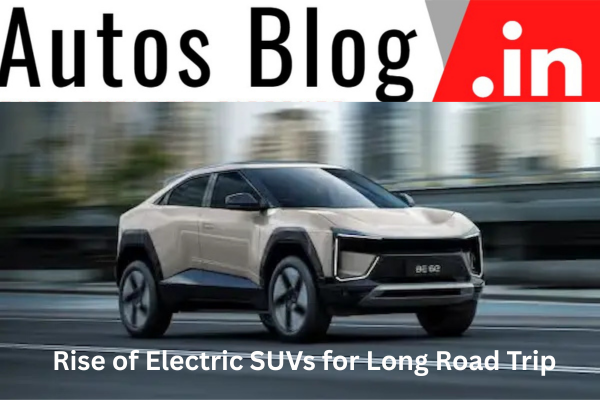Electric SUVs are gaining popularity as excellent choices for long road trips, thanks to continuous advancements in battery technology and charging infrastructure. Here’s a look at some of the top electric SUVs for road enthusiasts who love to travel.
Top Electric SUVs for Long Journeys

While there isn’t an official ranking, here are some of the best electric SUVs ideal for long-distance travel:
- BMW iX xDrive50: Leading the way with an impressive 380-mile range, the BMW iX xDrive50 is equipped with a large 111.5kWh battery pack, reducing the frequency of charging stops.
- Ford Mustang Mach-E Extended Range RWD: Offering 379 miles on a single charge, this SUV comes with a 99kWh battery that ensures a comfortable journey on the road.
- Tesla Model X Long Range: Known for its spacious interior and sleek design, the Model X Long Range delivers a range of 348 miles, supported by its 100kWh battery pack. Tesla’s Supercharger network further enhances convenience.
- Tesla Model Y: Popular for its efficiency, the Model Y offers a range of up to 330 miles and benefits from Tesla’s vast Supercharger network.
- Kia EV9: The Kia EV9 is an impressive option with a range of up to 304 miles and fast charging capabilities, with a 350-kW DC charger enabling 10-80% charging in just 24 minutes.
Factors to Consider for Electric SUV Road Trips
- Charging Speed and Infrastructure: The speed of charging is a key factor for long road trips. A well-established charging network, such as Tesla’s Supercharger stations, ensures smoother travel.
- Range: The longer the range, the fewer charging stops are required, making the trip more seamless and convenient.
- Battery Technology: Innovations like battery swapping can significantly cut down charging times, offering a faster solution when on the road.
- Energy Efficiency: Electric vehicles (EVs) convert energy more efficiently than internal combustion engine vehicles, minimizing waste heat and reducing the need for complex cooling systems.
- Hybrid Options: Hybrid electric vehicles (HEVs) combine an internal combustion engine and electric motor, offering a blend of fuel efficiency and extended range for long trips.
Innovations and Trends
- Battery Swapping: Companies such as NIO are advancing battery swapping technology, allowing drivers to quickly swap out depleted batteries for fully charged ones, drastically reducing wait times.
- Mild Hybrids: Mild hybrid systems, like those in the Hyundai Elantra LPI Hybrid, use liquefied petroleum gas (LPG) and lithium polymer batteries for a more efficient energy use.
- Bidirectional Power: Some electric models, including the Kia EV9, offer Vehicle-to-Load (V2L) capabilities, which allow the car to power devices or even provide electricity during power outages or at campsites.
- Regenerative Braking: Many modern HEVs feature regenerative braking systems that capture kinetic energy and store it as electrical energy for later use.
Challenges and Considerations
- Charging Availability: Despite rapid growth in charging infrastructure, EV charging stations are still not as widely available as gas stations, requiring careful planning for long trips.
- Charging Time: Even with fast-charging technologies, recharging an EV can take longer than refueling a gasoline-powered car.
- Weather Conditions: Cold temperatures can reduce an EV’s range, so drivers must plan accordingly to account for the increased energy consumption needed for heating systems.
As technology advances and charging networks expand, electric SUVs will become even more practical and appealing for those planning long road trips.






